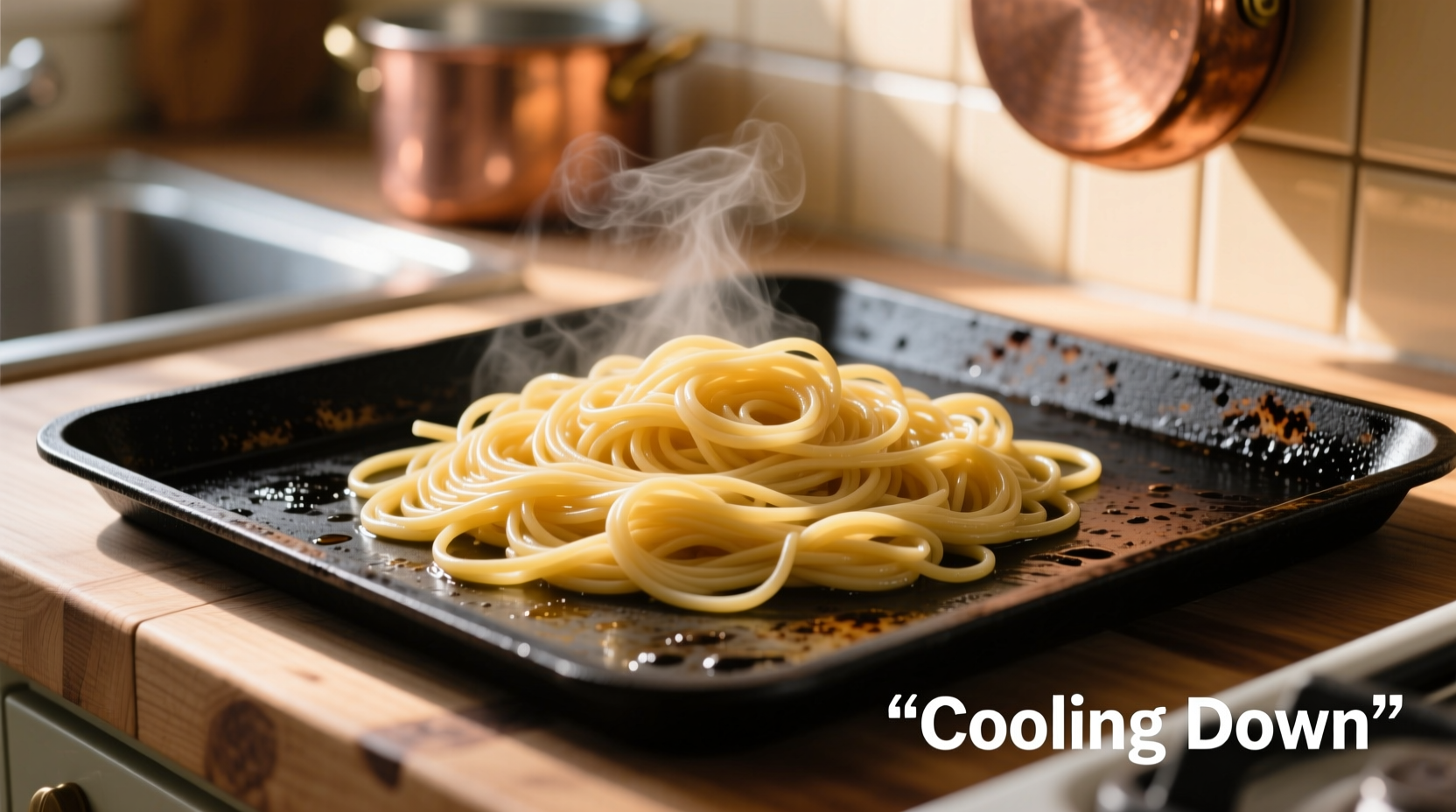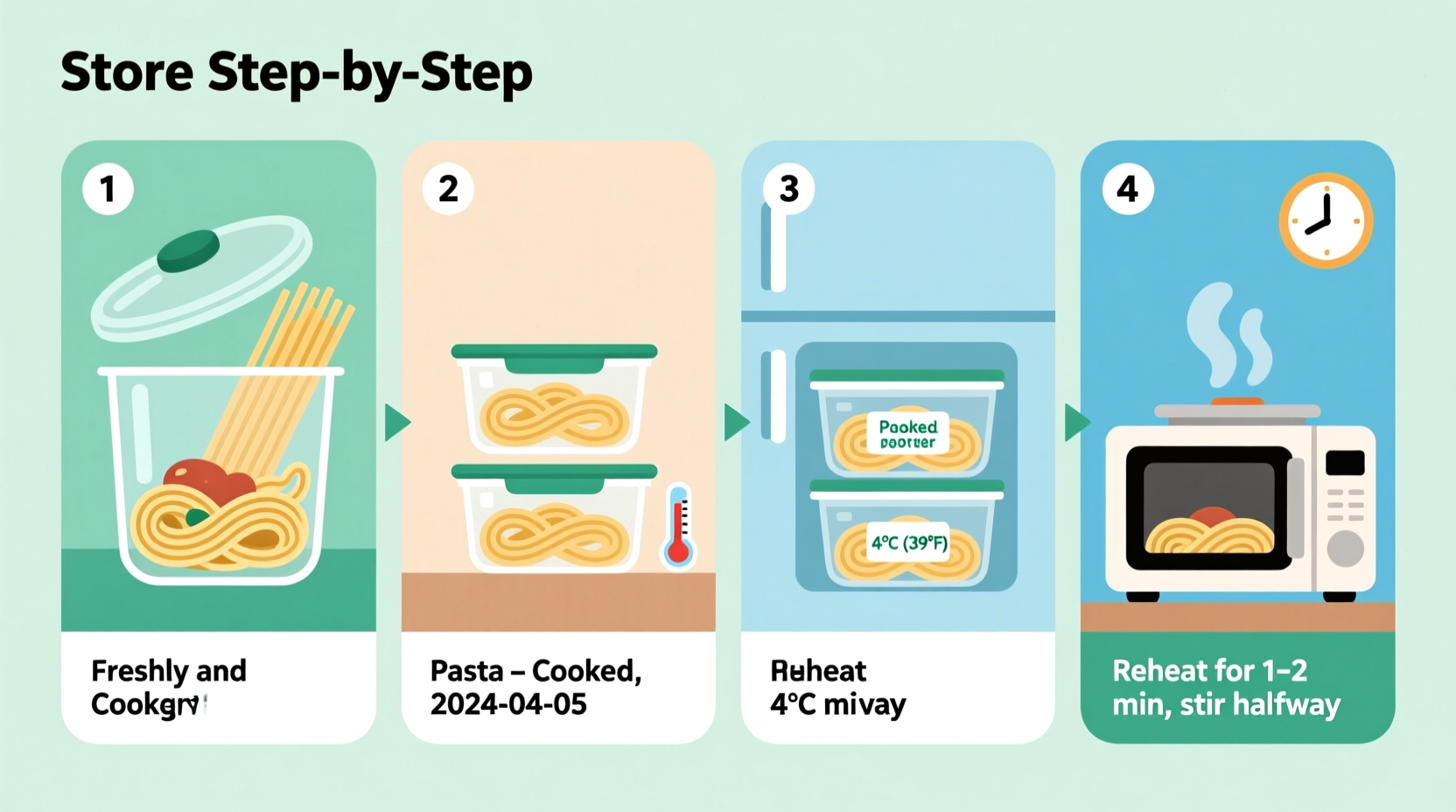Discover exactly how to store cooked pasta to maintain perfect texture and ensure food safety. Whether you've made too much spaghetti for dinner or prepped pasta for meal prep, this guide delivers professional kitchen techniques backed by food science to maximize freshness and prevent waste.
Why Proper Pasta Storage Matters
Improperly stored pasta becomes soggy, develops off-flavors, or worse—creates food safety risks. According to the USDA Food Safety and Inspection Service, cooked starches like pasta enter the "danger zone" (40°F-140°F) where bacteria multiply rapidly if not cooled properly. Professional kitchens follow strict protocols to maintain both quality and safety—now you can too.
The Critical Cooling Phase: Your First 2 Hours
Timing is everything when storing cooked pasta. The FDA Food Code mandates that cooked foods must be cooled from 135°F to 70°F within 2 hours, then to 41°F or below within 4 hours total. For pasta:
- Spread immediately: Dump cooked pasta onto a clean baking sheet in a single layer
- Avoid the sink trap: Never leave pasta sitting in drained water—this creates a breeding ground for bacteria
- Room temperature limit: Maximum 30 minutes before refrigeration for optimal safety

Step-by-Step Storage Protocol
For Refrigeration (3-5 Day Freshness)
- Cool pasta completely using the baking sheet method
- Toss with 1 teaspoon olive oil per pound (prevents sticking without greasiness)
- Transfer to airtight containers with ½ inch headspace
- Place containers in refrigerator within 2 hours of cooking
For Freezing (Up to 2 Month Quality)
- Cool pasta completely and toss with oil
- Portion into single-serving freezer bags
- Remove excess air using water displacement method
- Label with date and contents
- Freeze flat for quick stacking
| Storage Method | Max Duration | Texture Quality | Best For |
|---|---|---|---|
| Room Temperature | 2 hours | Good | Immediate serving only |
| Refrigerated (plain) | 3-5 days | Excellent | Meal prep, next-day use |
| Refrigerated (with sauce) | 2-3 days | Good | Complete dishes |
| Frozen (plain) | 1-2 months | Very Good | Long-term storage |
Avoid These Common Storage Mistakes
Food safety researchers at Centers for Disease Control and Prevention note these frequent errors that compromise both quality and safety:
- Storing hot pasta directly in containers—creates condensation that makes pasta mushy
- Using non-airtight containers—exposes pasta to refrigerator odors and moisture loss
- Adding too much oil—creates slippery texture that prevents sauce adherence later
- Freezing pasta with watery sauces—sauce separates upon thawing
Reheating Stored Pasta Perfectly
Revive stored pasta with these professional techniques:
- Refrigerated pasta: Drop into boiling salted water for 30-60 seconds
- Frozen pasta: Cook directly from frozen, adding 1-2 minutes to boiling time
- Sauce integration: Always finish cooking pasta in sauce for 1-2 minutes to re-emulsify flavors
Food science explains why this works: The brief rehydration in boiling water reactivates starches without overcooking, while finishing in sauce allows the pasta to absorb flavors through retrogradation—the process where cooked starch molecules reorganize and become more receptive to flavors.
When to Discard Stored Pasta
Follow these safety indicators from the FDA Food Code:
- Visible mold (discard entire container)
- Sour or unpleasant odor
- Excessive sliminess
- Storage beyond recommended timeframes
When in doubt, throw it out—especially for vulnerable populations like children, elderly, or immunocompromised individuals.
Special Considerations for Different Pasta Types
Not all pasta stores equally well. Delicate egg noodles and stuffed pastas (ravioli, tortellini) have shorter shelf lives than durum wheat varieties. Whole grain pastas may become slightly more brittle when frozen but maintain nutritional value. Always store filled pastas in single layers with parchment between pieces to prevent sticking.











 浙公网安备
33010002000092号
浙公网安备
33010002000092号 浙B2-20120091-4
浙B2-20120091-4